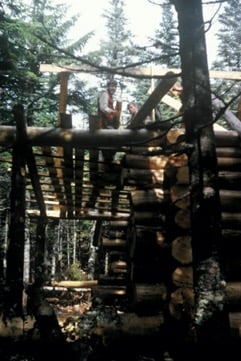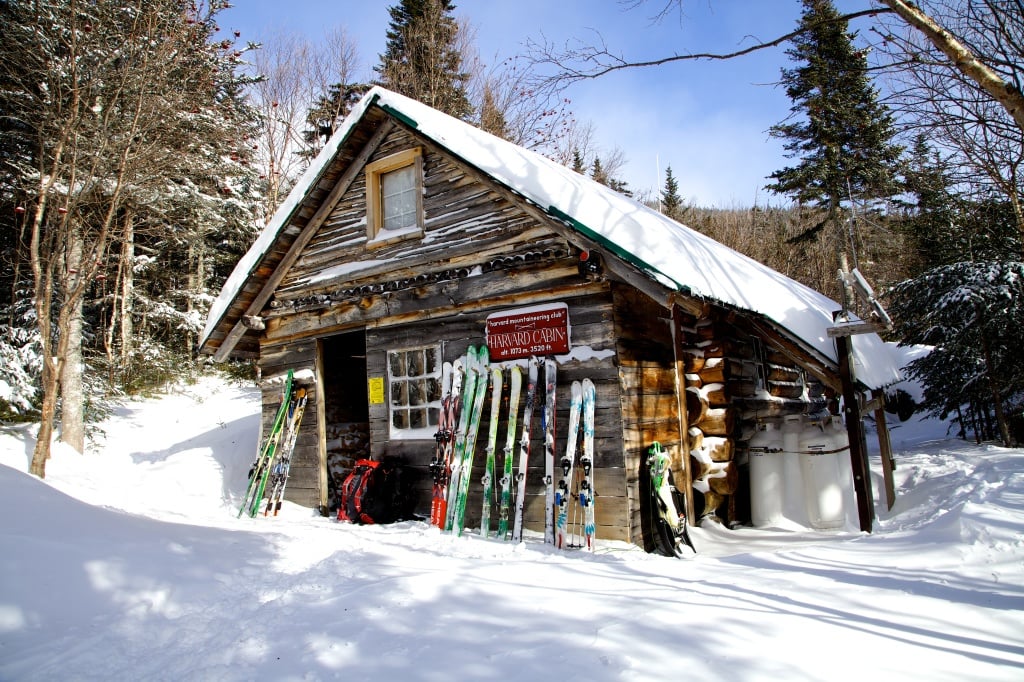Support Harvard Cabin
The Harvard Cabin has been open to the public for over 60 years, since its construction in 1962. Except for a paid seasonal caretaker, the cabin's affairs are managed by volunteers. Although still overseen by the Harvard Mountaineering Club, it is run as an independent nonprofit which does not receive financial support of any kind from Harvard.
We keep our lodging prices very low to ensure the cabin is accessible for all. Most seasons, the Harvard Cabin incurs a modest loss. Community donations are crucial to funding the cabin's upkeep and continued operations. Please consider making a donation today to support its mission. Annually recurring contributions are especially welcome, as the need for community support is ongoing from one season to the next.
Spur Cabin
Harvard Cabin's predecessor, the Spur Cabin, also known as "Harvard Hut," was constructed in 1932 along the John Sherburne Ski Trail at the base of Tuckerman Ravine and Boott Spur. Early Harvard Mountaineering Club member Brad Washburn was one of the driving forces behind this cabin, hauling supplies up the mountain with a Ford Model A he purchased with royalties from books he had written as a teenager about his climbing adventures in Switzerland and beyond.
The cabin became a base for ski races in the days before chairlifts as well as a training camp for Harvard Mountaineering Club members to prepare themselves for larger climbs elsewhere.
The Spur Cabin was removed in 1963 shortly after the current Harvard Cabin was constructed.


Harvard Cabin
The current Harvard Cabin was built in 1962 to replace the old Spur Cabin. The location was chosen for its proximity to alpine ice climbing in Huntington Ravine.
The cabin was built entirely out of local materials. Logs were felled on the mountain and dragged to the cabin site by Harvard Mountaineering Club members.
The cabin has become a base for alpine ice climbers and other winter adventurers intent on climbing to the summit or just enjoying a day on the mountain, a key link in the avalanche safety program on Mount Washington,
Over the years the cabin has been outfitted with radios, LED lighting, and a solar power system to keep it all running.

